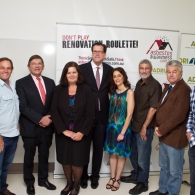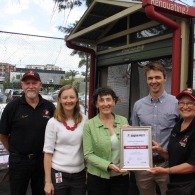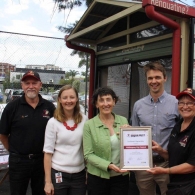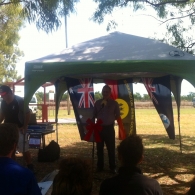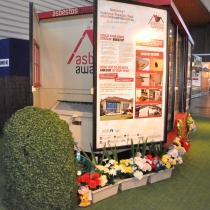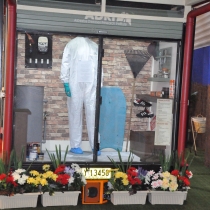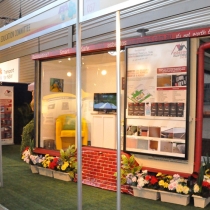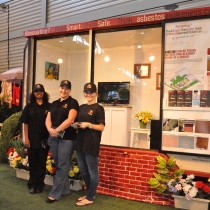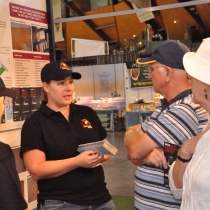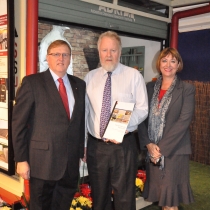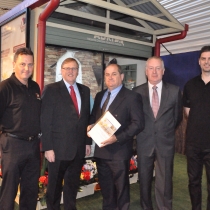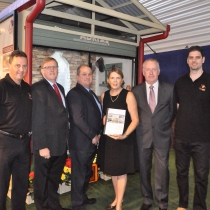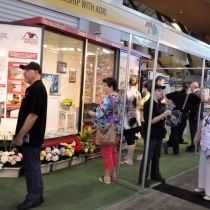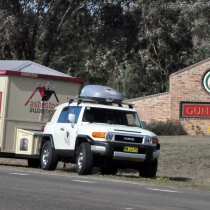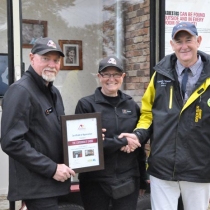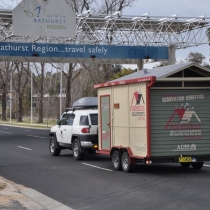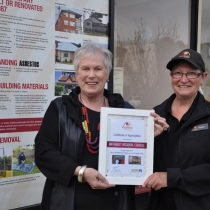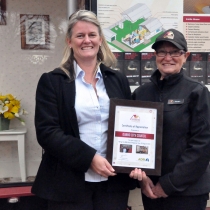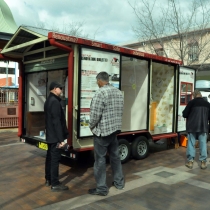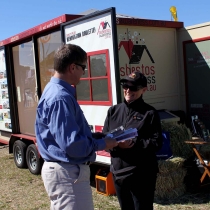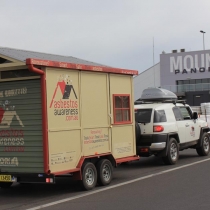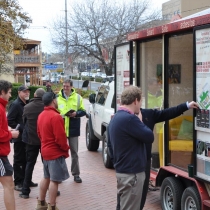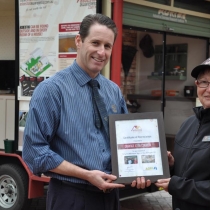TAS
Fact Sheets & Checklists
HOMEOWNERS
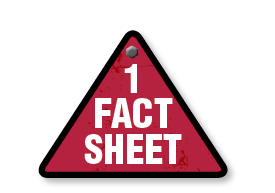 |
FACT SHEET 1: WORKING SAFELY WITH ASBESTOS AROUND THE HOMEA simple guide to ensure homeowners manage asbestos safely. Download Size 3MB |
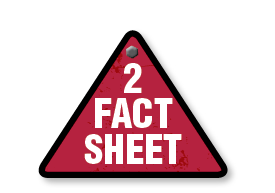 |
FACT SHEET 2: SAFE PRACTICES FOR HOMEOWNERS REPAIRING OR REMOVING SMALL AMOUNTS OF ASBESTOS MATERIALSA detailed guide to ensuring homeowners manage asbestos safely when repairing or removing small amounts of asbestos safely. Download Size 4MB |
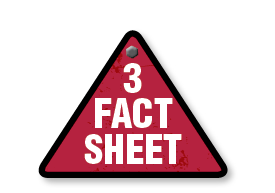 |
FACT SHEET 3: SAFE PRACTICES FOR RURAL & REGIONAL HOMEOWNERS & FARMERS REPAIRING OR REMOVING SMALL AMOUNTS OF ASBESTOS MATERIALSA simple guide ensuring safe practices for the management of asbestos in rural and regional communities and on farms. Download Size 4MB |
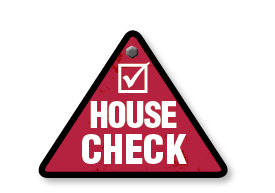 |
THE RESIDENTIAL CHECKLIST: A HOMEOWNER’S GUIDE TO IDENTIFYING ASBESTOS-CONTAINING MATERIAL TO MANAGE IT SAFELY‘The Residential Checklist‘ is designed to empower homeowners and renovators with a better understanding of the possible locations of asbestos-containing materials in homes and the knowledge they need to ensure it is managed safely. These Checklists include product images and lists each possible location where asbestos-containing materials might be found both inside and outside homes. By following simple step-by-step instructions, in less than an hour homeowners can have a better understanding of the types of products that might be in their home and if it’s in need of maintenance, repair or removal. Download Size 4MB |
 |
BLANK CHECKLIST TABLE FOR ADDITIONAL LOCATIONS & PRODUCTSAdditional blank tables for checklists if you require additional space. Download Size 1MB |
 |
BLANK SCHEDULE TABLEAdditional blank schedule table if you require additional space. Download Size 1MB |
TRADIES
FACT SHEETS
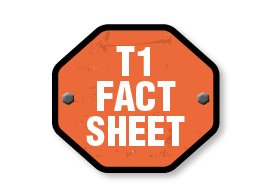 |
T1: 20 POINT SAFETY CHECK FOR TRADIESDownload Size 2MB |
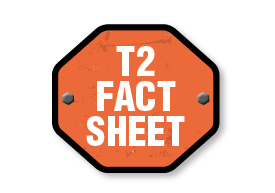 |
T2: A TRADIE’S GUIDE TO SAFE PRACTICES IN MANAGING ASBESTOS IN RESIDENTIAL PROPERTIESA detailed guide to ensure tradies manage asbestos safely when working in residential properties. Download Size 4MB |
CHECKLISTS
T3: A Trades-person’s Guide to Asbestos Containing Materials in Domestic PropertiesAn instruction guide for the Tradies Residential Asbestos Checklist Download Now |
|
 |
Total Property Checklist – GenericA total property guide to ensure tradies manage asbestos safely when working in residential properties. Download Now |
 |
Blank Checklist Tables For TradiesAdditional tables for checklists if you require additional space. Download Now |
 |
Blank Repair Schedules For TradiesAdditional repair schedules for checklists if additional space is required. Download Now |
TRADE SPECIFIC CHECKLISTS
| Instruction Guide: Residential Asbestos Checklist For Tradies – Download Checklist 4mb | |
|
|
|
|
|
|
|
|
|
|
|
|
|
|
|
|
|
|
|
|
|
|
|
|
|
|
|
|
|
|
|
|
|
|
|
|
|
|
|
|
|
|
TOOLBOX TALKS
 |
National Asbestos Awareness Month Toolbox TalkDownload Now |
 |
Unexpected Asbestos FindsDownload Now |
 |
Types of asbestos common in constructionDownload Now |
 |
Naturally Occurring AsbestosDownload Now |
 |
Managing asbestos in the workplaceDownload Now |
 |
Exploding Asbestos MythsDownload Now |
 |
Commercial Non-residential PropertiesDownload Now |
 |
Asbestos Management Plans & RegistersDownload Now |
 |
Asbestos in residential propertiesDownload Now |
 |
Rural and regional propertiesDownload Now |
 |
Download All 10 Toolbox Talks in single PDF Download All 10 Toolbox Talks in zip file |
COMMERCIAL & NON-RESIDENTIAL
 |
ASBESTOS MANAGEMENT HANDBOOK FOR COMMERCIAL & NON-RESIDENTIAL PROPERTIESThe Handbook is a comprehensive guide providing information on the roles and responsibilities of property owners, managers, contractors, sub-contractors, foreman and workers. It features easy to follow step-by-step instructions on how to develop and implement policies and procedures to assist in identifying and managing asbestos safely and in accordance with regulations. It includes a list of property types across multiple sectors including government, business (high rise, mid-rise, low rise), industrial, agriculture, recreation, education and more. The Handbook that explains complex information in user-friendly, accessible terms is complemented by Fact Sheets and Templates. The Handbook also features images of asbestos-containing products commonly found in commercial and non-residential properties.
|
 |
ASBESTOS REGISTER TEMPLATEThe Asbestos Register is one of the most important documents required to manage asbestos safely. The Template can be downloaded in Excel enabling users to note the locations and types of asbestos-containing materials (ACMs) found in properties, the areas where ACM is suspected but not confirmed, if and when testing has been conducted; and, if ACM has or is to be removed.
|
 |
MODEL ASBESTOS MANAGEMENT PLAN (AMP) GUIDE TEMPLATEWhile the Handbook provides instructions and recommendations for developing an Asbestos Management Plan (AMP), this Template is a user-friendly guide that lists the various steps required to meet mandatory requirements. The Template is pre-prepared in Word and incorporates all the information required to ensure asbestos is managed safely and in accordance with regulations.
|
 |
ASBESTOS REMOVAL RECORD TEMPLATEThe Asbestos Removal Record Template enables users to record the removal of asbestos-containing materials (ACMs) found in properties.
|
 |
WORKERS TRAINING REQUIREMENTS & RECORDS TEMPLATEIt is a mandatory requirement that all workers who may come into contact with asbestos must be trained to identify and manage asbestos and ACMs in accordance with regulations, and to ensure they understand the risks and procedures required to manage asbestos safely. All training of workers must be recorded and maintained for five years after employment has ceased. The Template can be downloaded in either Excel or Word to assist managers in recording all staff training in accordance with regulations.
|
 |
MODEL ASBESTOS POLICY FOR CONTRACTORS & BUILDERS TEMPLATEThe Model Asbestos Policy Template is designed to assist contractors and builders to initiate asbestos safety policies in their workplace. The Template can be downloaded in Word to enable managers or business owners to incorporate a logo, company name and any additional information they wish to include as part of their Asbestos Policy.
|
 |
MODEL ASBESTOS MANAGEMENT PROCEDURES FOR CONTRACTORS & BUILDERS TEMPLATEAsbestos Management Procedures are an essential part of an AMP. The Template is designed to provide contractors and builders with the resources they need to ensure their asbestos management procedures are effective to minimise exposure of asbestos fibres among workers.
|
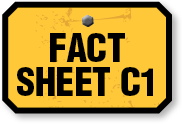 |
FACT SHEET C1 – UNEXPECTED ASBESTOS, ACM FINDS OR INCIDENTS PROCEDURES FLOW CHARTThe Flow Chart provides a user-friendly, step-by-step visual guide to managing unexpected asbestos finds in accordance with regulations which can be displayed in the workplace and issued to workers as part of their training.
|
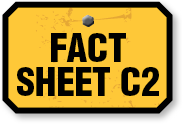 |
FACT SHEET C2 – UNEXPECTED ASBESTOS FINDS OR INCIDENTSUnexpected asbestos finds pose a threat to workers so it’s vital that they are trained in the steps required to minimise exposure to asbestos fibres. This Fact Sheet provides guidance and step-by-step procedures for managing unexpected finds or incidents and where possible, what is required to minimise any future risks.
|
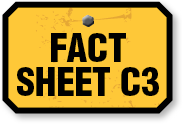 |
FACT SHEET C3 – ASBESTOS MANAGEMENT RECOMMENDATIONS AND GUIDELINESThe Asbestos Management Recommendations & Guidelines Fact Sheet provides users with user-friendly information for the safe management of asbestos in commercial and non-residential properties which may be issued to workers as part of their training program.
|
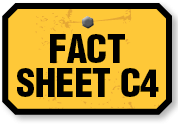 |
FACT SHEET C4 – USING PPE AND RPEKnowing when, why and how to use and lawfully dispose of PPE and RPE is critical to workers who may come in contact with asbestos on the job. This Fact Sheet provides step-by-step instructions on how to use and dispose of PPE and RPE in accordance with regulations.
|
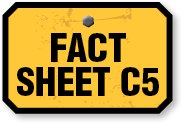 |
FACT SHEET C5 – ROLES AND RESPONSIBILITIES FOR THE MANAGEMENT OF ASBESTOS AND ACMThis Fact Sheet contains a matrix to visually demonstrate the various responsibilities of property owners, contractors, subcontractors and workers when it comes to managing asbestos safely in the workplace.
|
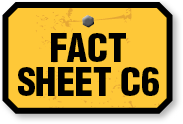 |
FACT SHEET C6 – 20 POINT SAFETY CHECK FOR CONTRACTORS, SUBCONTRACTORS AND WORKERSThis checklist provides 20 key points to assist in managing asbestos safely and may be used as part of asbestos awareness training programs.
|
 |
ALL COMMERCIAL RESOURCESAccess and download all files including ‘Print Ready’ files with crop marks, digital files and fact sheets etc |
NATURALLY OCCURRING ASBESTOS
While the NOA Guide was developed for use by people living in NSW, the practices the Guide recommends in establishing and maintaining a NOA Asbestos Management Plan may also be appropriate for use in any community where NOA has been identified or is suspected. Generic versions of the Naturally Occurring Asbestos – Asbestos Management Plan Guide and templates were created for reference by people living and working in states other than NSW. If you live in a state or territory other than NSW, contact your regulator to ensure NOA is managed in accordance with regulations.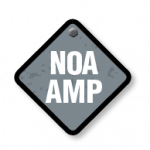 |
NATURALLY OCCURRING ASBESTOS – ASBESTOS MANAGEMENT PLAN GUIDEThe Naturally Occurring Asbestos – Asbestos Management Plan Guide explains the reasons why it’s important to manage NOA safely, when and where NOA may pose a potential health risk, who to contact for advice, and the steps required to manage NOA safely in accordance with NSW Work, Health and Safety Regulations 2017 and the Codes of Practice for asbestos management. User-friendly templates have been developed to assist people in developing and managing an Asbestos Management Plan. All templates are available in 2 formats. The first includes fields where users can type information, and the second is in PDF format that can be printed for handwritten notes.
|
 |
ASBESTOS MANAGEMENT PLAN – SITE SPECIFIC TEMPLATEThis template is designed for use when conducting risk assessments in various parts of properties as work is required.
|
 |
ASBESTOS MANAGEMENT PLAN – PROPERTY RISK ASSESSMENT TEMPLATEThis template enables users to itemise the necessary information when conducting a property risk assessment for naturally occurring asbestos.
|
 |
INCIDENT PROCEDURES & REPORT TEMPLATEThis template enables users to record incidents and steps to manage and record incidences should they occur.
|
 |
WORKERS TRAINING REQUIREMENTS & RECORDS TEMPLATEThis template assists managers in recording and maintaining records of training undertaken by workers in asbestos awareness and naturally occurring asbestos.
|
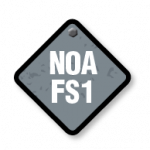 |
FACT SHEET 1: NOA DECONTAMINATIONThe Decontamination Fact Sheet provides information about the importance of personal and equipment decontamination when working with NOA and the steps for disposal and transportation of NOA. Download Size 1.3MB |
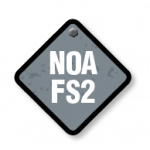 |
FACT SHEET 2: NOA RPE & PPEThe NOA RPE and PPE Fact Sheet provides information about Respiratory Protective Equipment (RPE) and Personal Protective Equipment (PPE) is, why it’s essential and how to use it correctly and effectively. Download Size 1.3MB Download Size 1.7MB |
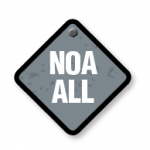 |
ALL NOA DOCUMENTATIONAccess and download all files including ‘Print Ready’ files with crop marks, digital files and fact sheets etc ACCESS ALL FILES |
Video: Asbestos In Your Home
Asbestos In Homes: A Guide to Identification, Testing & Removal
Asbestos in Homes: A Guide to Identification, Testing and Removal demonstrates the entire process of safe asbestos management by professionals from assessment, identification and removal of asbestos-containing materials to obtaining a clearance certificate to ensure they meet government requirements. Industry experts explain asbestos safety, the legalities and shows property owners the simple steps they need to take BEFORE starting renovations so they know how to protect themselves, their families, tradies and anyone who might risk exposure to asbestos fibres during renovations, demolition and maintenance.
Featuring industry leaders Cherie Barber, Australia’s Renovation Queen™ and Asbestos Awareness Ambassador and members of the Asbestos Education Committee; Bret Baker, President of the Asbestos & Hazmat Removal Contractors Association of NSW (AHRCA); John Batty, President of the Asbestos & Hazardous-Materials Consultants Association (AHCA); and Mathew Klintfält, homeowner and renovator who continues the work of his late mother Carol Klintfält OAM in asbestos awareness advocacy, together we’re continuing to provide essential, informative tools that can help save lives.
The Asbestos In Homes: A guide to Identification, Testing & Removal video was proudly sponsored by EDP – an RSK Company, Renovating For Profit, Beasy PTY Ltd, The Asbestos Education Committee & Advocacy Australia.
Asbestos In Homes: Identification, Testing & Removal (Full Length)
Asbestos In Homes: Identification, Testing & Removal (Overview)
Our heartfelt thanks to Cherie Barber for producing this informative video for the National Asbestos Awareness campaign. Cherie has been an Asbestos Awareness Ambassador since 2013 and is widely known as Australia’s Renovation Queen and the nation’s leading authority on profitable home renovating. Thanks to Cherie’s undying dedication to increasing awareness of the dangers of asbestos among homeowners and renovators, together we’re helping to prevent the incidences of asbestos-related diseases across Australia.
Asbestos In Your Home: The Ultimate Renovators Guide
NOTE: Since this video was produced, in accordance with revised national data, the year for the end of residential asbestos use has been extended from 1987 to 1990.
Asbestos Database A-Z
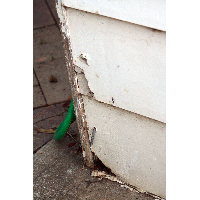
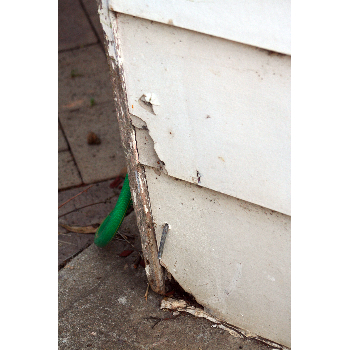 Full Size
Full Size
| Name | Broken Asbestos cladding |
|---|---|
| Caption | Broken exterior asbestos cladding - Hardiplank |
| Location | Domestic home |
| Source | Asbestos Education Committee |
| Image Id | 68 |
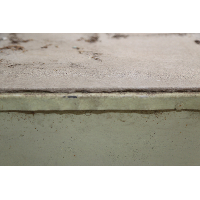
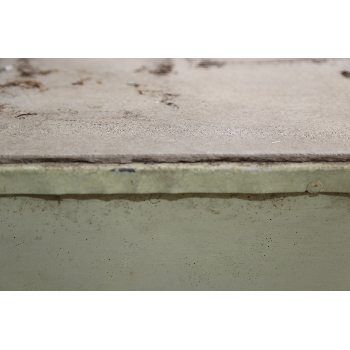 Full Size
Full Size
| Name | Cement sheet cladding - exterior 201 |
|---|---|
| Caption | Asbestos cement cladding on small backyard shed |
| Location | Domestic home |
| Source | Asbestos Education Committee |
| Image Id | 69 |
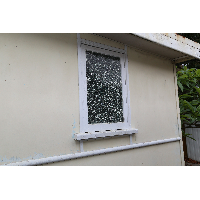
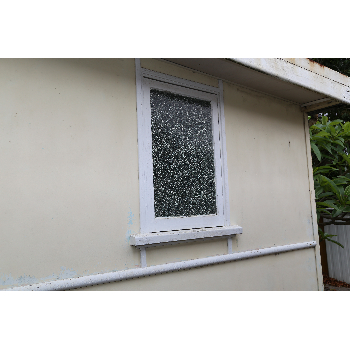 Full Size
Full Size
| Name | Cement sheet cladding - exterior 206 |
|---|---|
| Caption | Asbestos cement sheet cladding - exterior walls and eaves |
| Location | Domestic home |
| Source | Asbestos Education Committee |
| Image Id | 70 |
Asbestos Cement Sheet
| Product description | |
|---|---|
|
Smooth, flat fibre cement sheet that is painted on-site to create a flat panel look. Tough, flexible sheeting suitable for external cladding and internal lining. Flat cement sheets were made of asbestos fibres and cement mix, commonly in the ratio of 1 to 9. In the asbestos cement sheet, asbestos fibres are bound within the cement matrix and are considered to be well immobilised in the cement and less prone to be released into the environment. Due to its asbestos content, cement sheets are heat and moisture resistant making them ideal for use in wet or heat sensitive areas. Asbestos cement sheets were used as ceiling paneling, internal and external walls, external eaves across domestic, agricultural, commercial and industrial applications. Often referred to as fibro. Fibro sheeting is perhaps one of the commonest building products to come across when doing renovations to an older building. It was widely used from the 1950s to the late 1980s.The most likely form of fibro to come across is flat sheet fibro, often used for outside cladding of houses, sheds and garages. This flat sheeting was simply nailed to the wooden framed structure thus making construction quick and cheap. Below lists the approximate dates the products ceased to be manufactured with asbestos.
|
|
| Product type | Cement - sheets, moulded product |
| Sub-Product type | |
| Trading name(s) |
Fibrolite Versilux Colorbord Hardiflex - ceased 1981 Hardiplank - ceased 1981 Harditherm - ceased 1984 Wunderflex Hardie's Compressed Sheet Villaboard - ceased 1981 Durabestos |
| Other name(s) | AC sheet, fibre cement sheet, fibro |
| Build element | Construction of exterior and interior walls and ceilings. |
| Product identification | |
|
An indicator the cladding is made of asbestos cement sheeting is moulded asbestos cement battens / cover strips used to cover the join between the sheets which were usually 40mmx6mm or 75mmx8mm or wooden d mould cover strips. Asbestos cement sheets are white to grey in colour and are quite hard and brittle. When subjected to machining, power tools or extensive weathering this product can become friable and the internal fibres that were originally bounded by cement can become liberated into the air. Another key identification is when the nail head is sitting on top of the sheet (not indented into the surface). |
|
| Known uses | Tough, flexible sheeting suitable for external cladding (walls and eaves) and internal lining of homes (walls and ceilings), sheds, garages, chook sheds, extensions and additions. |
| Asbestos fibre type |
Amosite (brown asbestos) Chrysotile (white asbestos) Crocidolite (blue asbestos) |
| Friable or Non-Friable | Non-Friable |
| Known Supplier(s) |
James Hardie CSR |
| Known place of manufacture | Australia, China, Canada, Russia |
| Date / period of manufacture | 1940s - 1987 |
| Building construction period | 1900-1920,1921-1930,1931-1940,1941-1950,1951-1960,1961-1970,1970-1980,1981-1990,Pre 1900 |
| Location |
Domestic home
|
More Images
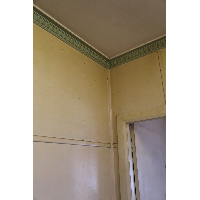
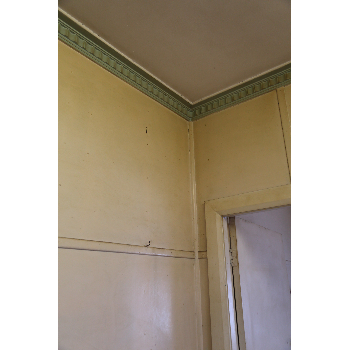 Full Size
Full Size
| Name | Cement sheet cladding - internal 95 |
|---|---|
| Caption | Cement sheet lining on walls and ceiling with asbestos cement cover strips over the joins. |
| Location | Domestic home |
| Source | Asbestos Education Committee |
| Image Id | 71 |
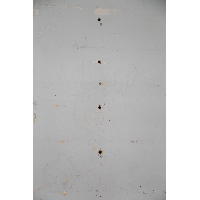
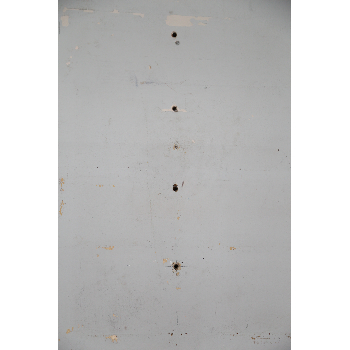 Full Size
Full Size
| Name | Asbestos Cement Sheeting - holes drilled. |
|---|---|
| Caption | Asbestos cement sheet where holes were drilled. This is a hazard. |
| Location | Domestic home |
| Source | Asbestos Education Committee |
| Image Id | 72 |
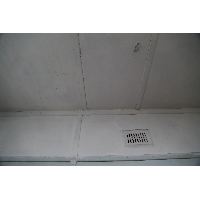
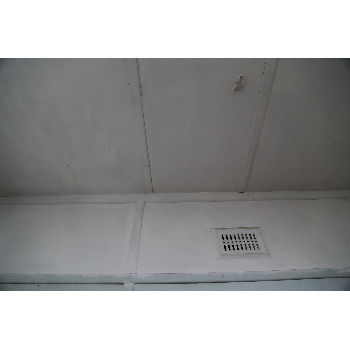 Full Size
Full Size
| Name | Asbestos cement sheeting 138 |
|---|---|
| Caption | Cement sheet lining on walls and ceiling with asbestos cement cover strips over the joins. The moulded asbestos cement battens used to cover the join between the sheets were usually 40mmx6mm or 75mmx8mm. |
| Location | Domestic home |
| Source | Asbestos Education Committee |
| Image Id | 73 |
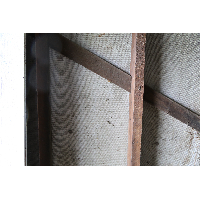
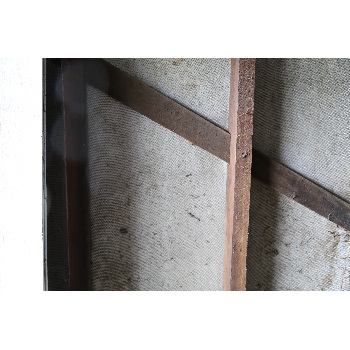 Full Size
Full Size
| Name | Underside of sheet 242 |
|---|---|
| Caption | Underside of asbestos cement cladding as seen from the inside a garage. Notice |
| Location | Domestic home |
| Source | Asbestos Education Committee |
| Image Id | 74 |
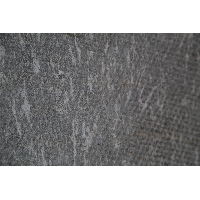
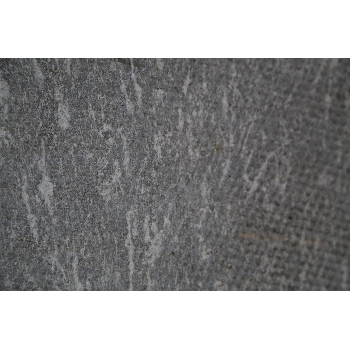 Full Size
Full Size
| Name | Close Up Reverse Asbestos Cement Sheet |
|---|---|
| Caption | Close up of underside of asbestos cement . Notice the golf ball dimpling - this is an indication that the material is asbestos cement sheeting. |
| Location | Domestic home |
| Source | Asbestos Education Committee |
| Image Id | 75 |
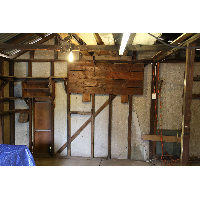
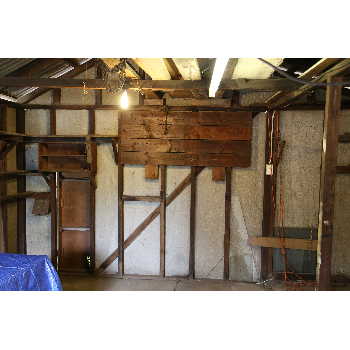 Full Size
Full Size
| Name | Internal Garage Asbestos Cement Sheeting |
|---|---|
| Caption | Inside view of fibro cladding on a garage. |
| Location | Domestic home |
| Source | Asbestos Education Committee |
| Image Id | 76 |
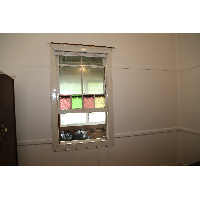
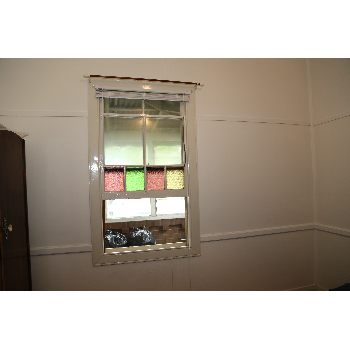 Full Size
Full Size
| Name | Internal Fibro cement wall 296 |
|---|---|
| Caption | Internal Fibro cement wall lining with window and timber D cover strips over the joins |
| Location | Domestic home |
| Source | Asbestos Education Committee |
| Image Id | 77 |
| Name | Asbestos cement extension and Gables |
|---|---|
| Caption | Asbestos cement was commonly used on extensions on pre 1950s homes. |
| Location | Domestic home |
| Source | Asbestos Education Committee |
| Image Id | 129 |
| Name | Asbestos cement extension - 1800s Victorian Terrace |
|---|---|
| Caption | Asbestos cement was commonly used on extensions on pre 1950s homes as seen in the closed in balcony on this Victorian terrace. |
| Location | Domestic home |
| Source | Asbestos Education Committee |
| Image Id | 130 |
| Name | Dormer window asbestos cement extension |
|---|---|
| Caption | Asbestos cement was commonly used on extensions on pre 1950s homes as seen in this dormer window on this Victorian terrace. |
| Location | Domestic home |
| Source | Asbestos Education Committee |
| Image Id | 131 |
| Name | Asbestos Cement cladding |
|---|---|
| Caption | Asbestos cement cladding with a profile view clearly showing the moulded asbestos cover strip / join strip and sheet. |
| Location | Domestic home |
| Source | Asbestos Education Committee |
| Image Id | 132 |
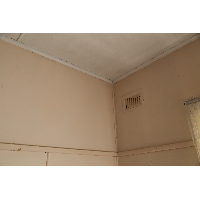
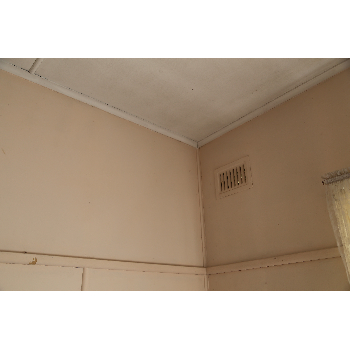 Full Size
Full Size
| Name | Asbestos cement sheeting - wall lining and ceiling |
|---|---|
| Caption | Asbestos cement sheeting - internal wall lining with D mould wooden cover strips |
| Location | Domestic home |
| Source | Asbestos Education Committee |
| Image Id | 135 |
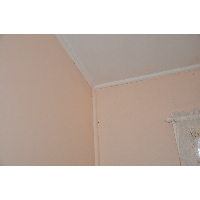
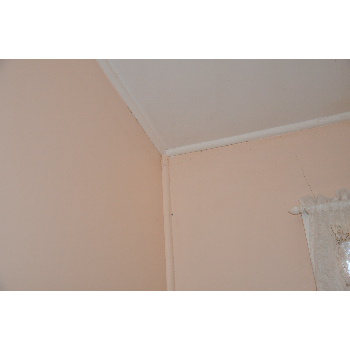 Full Size
Full Size
| Name | Asbestos cement sheeting - wall lining and ceiling |
|---|---|
| Caption | Asbestos cement sheeting - internal wall lining with D mould wooden cover strips |
| Location | Domestic home |
| Source | Asbestos Education Committee |
| Image Id | 136 |
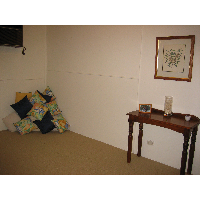
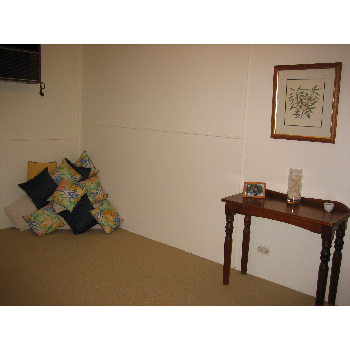 Full Size
Full Size
| Name | Asbestos cement sheeting - wall lining |
|---|---|
| Caption | Asbestos cement sheeting - wall lining freshly painted |
| Location | Domestic home |
| Source | Asbestos Education Committee |
| Image Id | 137 |

 Full Size
Full Size
| Name | Cement sheet cladding - exterior |
|---|---|
| Caption | Asbestos cement sheet cladding - exterior. Eaves and roof also asbestos cement. |
| Location | Domestic home |
| Source | Asbestos Education Committee |
| Image Id | 138 |
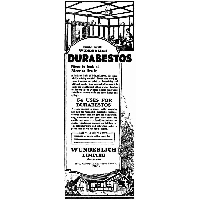
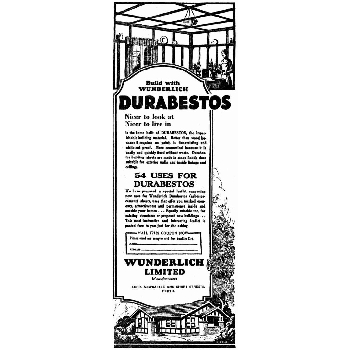 Full Size
Full Size
| Name | Durasbestos Ad 1929 |
|---|---|
| Caption | Durasbestos ad from 1929 |
| Location | Other |
| Source | Archive: Wikipedia - Source Unknown - Western Mail, 1929 (29 August 1929). |
| Image Id | 186 |
| Name | Asbestos Cement Sheeting - shed |
|---|---|
| Caption | Asbestos Cement Sheeting - shed exterior |
| Location | Agricultural |
| Source | Asbestos Education Committee |
| Image Id | 187 |
| Name | Asbestos Cement Sheeting - garage exterior |
|---|---|
| Caption | Asbestos Cement Sheeting - garage exterior. Many homes in the affluent areas erected a fibro garage to house their new car in the 1950s - 1960s |
| Location | Domestic home |
| Source | Asbestos Education Committee |
| Image Id | 188 |
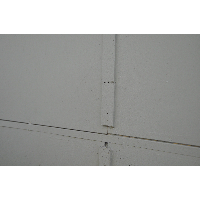
 Full Size
Full Size
| Name | Asbestos Cement Sheeting - garage exterior |
|---|---|
| Caption | Run down asbestos cement sheeting on garage with moulded asbestos cover strips missing or broken. |
| Location | Domestic home |
| Source | Asbestos Education Committee |
| Image Id | 194 |

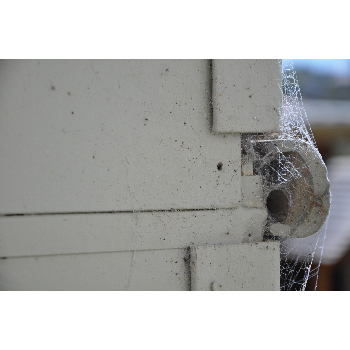 Full Size
Full Size
| Name | Asbestos Cement Sheeting and trim |
|---|---|
| Caption | Run down asbestos cement sheeting on garage with moulded asbestos cover strips and corner moulding missing or broken. The fibre texture can be seen at the edge of the broken strip. |
| Location | Domestic home |
| Source | Asbestos Education Committee |
| Image Id | 195 |
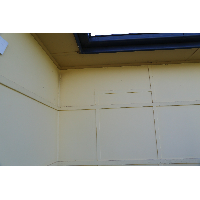
 Full Size
Full Size
| Name | Asbestos Cement cladding - exterior |
|---|---|
| Caption | Asbestos cement sheet cladding - exterior with moulded cover strips. Eaves also asbestos cement. |
| Location | Domestic home |
| Source | Asbestos Education Committee |
| Image Id | 196 |
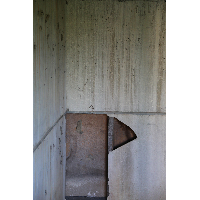
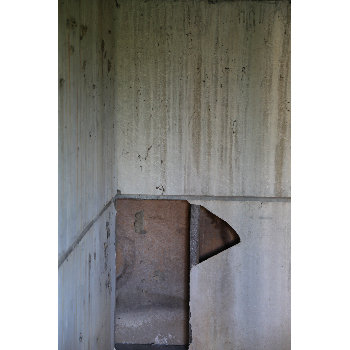 Full Size
Full Size
| Name | Unpainted cement sheeting |
|---|---|
| Caption | Hazardous asbestos cement sheeting under a house which has never been painted and has sections broken. |
| Location | Domestic home |
| Source | Asbestos Education Committee |
| Image Id | 197 |
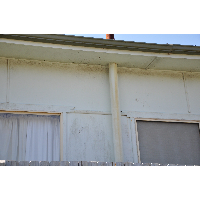
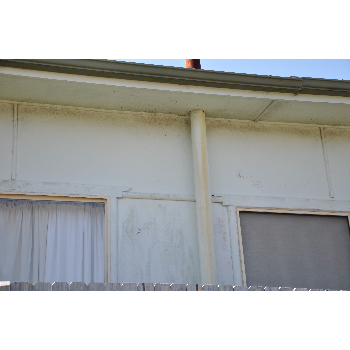 Full Size
Full Size
| Name | Asbestos Cement cladding and eaves - exterior |
|---|---|
| Caption | This home is clad in asbestos cement sheeting with eaves also made of asbestos cement. The Flue may have asbestos containing material at joins. |
| Location | Domestic home |
| Source | Asbestos Education Committee |
| Image Id | 198 |
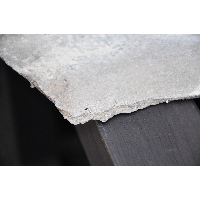
 Full Size
Full Size
| Name | Close Up Asbestos Cement Sheet |
|---|---|
| Caption | Close up of broken asbestos cement showing Chrysotile fibres. |
| Location | Domestic home |
| Source | Asbestos Education Committee |
| Image Id | 199 |
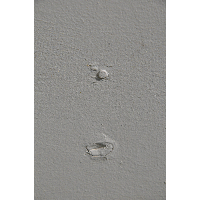
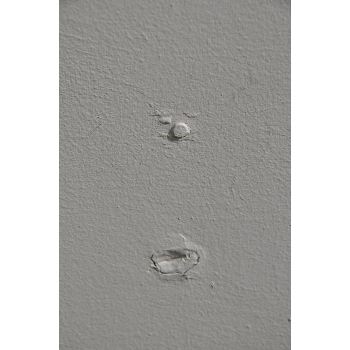 Full Size
Full Size
| Name | Nails in cement sheeting |
|---|---|
| Caption | Special nails, galvanised shear point, where designed to fix asbestos sheeting to the wall. The tip of the nail is blunt (no point) with a flat head. They were punched into the asbestos cement sheeting rather than splitting it. Nails stand slightly proud of the surface of the sheet. |
| Location | Domestic home |
| Source | Asbestos Education Committee |
| Image Id | 200 |
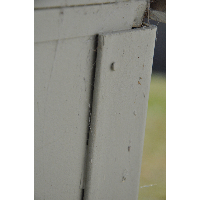
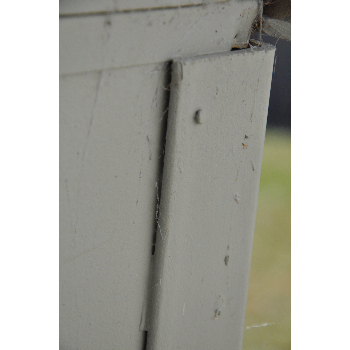 Full Size
Full Size
| Name | Asbestos cement - wall and corner moulding |
|---|---|
| Caption | Close up of asbestos cement sheeting with corner moulding. The galvanised shear point is visible slightly proud of the surface. |
| Location | Domestic home |
| Source | Asbestos Education Committee |
| Image Id | 201 |
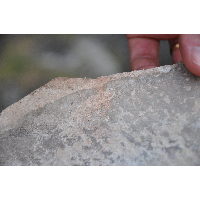
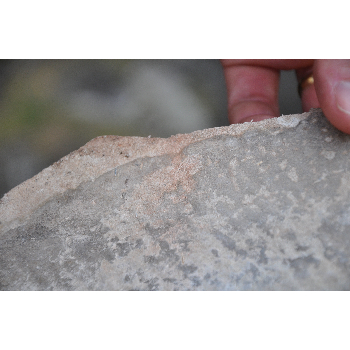 Full Size
Full Size
| Name | Close Up Asbestos Cement Sheet |
|---|---|
| Caption | Close up of broken asbestos cement showing Chrysotile fibres. |
| Location | Domestic home |
| Source | Asbestos Education Committee |
| Image Id | 202 |
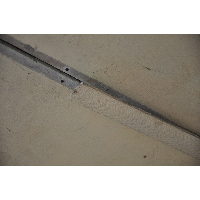
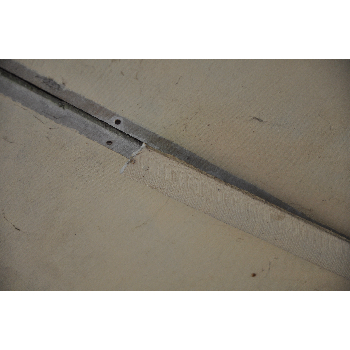 Full Size
Full Size
| Name | AC Eave and cover strip - hazard |
|---|---|
| Caption | Asbestos cement eave with broken / falling off moulded asbestos cover strip exposing the join. This is hazardous as it exposes raw sheeting and when the strip falls off will break causing the release of asbestos dust and fibres. |
| Location | Domestic home |
| Source | Asbestos Education Committee |
| Image Id | 203 |
| Name | Asbestos cement - Shadowline |
|---|---|
| Caption | Asbestos cement - Shadowline wall sheeting |
| Location | Domestic home |
| Source | Asbestos Education Committee |
| Image Id | 213 |
| Name | Asbestos cement - Shadowline |
|---|---|
| Caption | Asbestos cement - Shadowline wall sheeting |
| Location | Domestic home |
| Source | Asbestos Education Committee |
| Image Id | 214 |
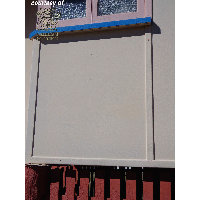
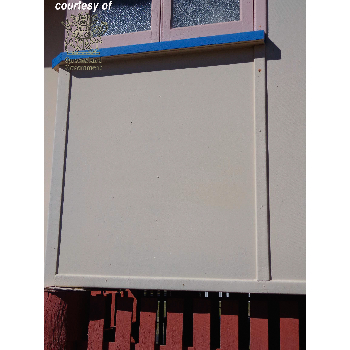 Full Size
Full Size
| Name | Flat cement sheeting - exterior |
|---|---|
| Caption | Flat cement sheeting with asbestos containing material cornice cover strips. |
| Location | Domestic home |
| Source | Queensland Government |
| Image Id | 283 |

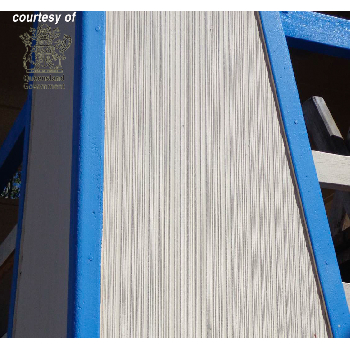 Full Size
Full Size
| Name | Striated Sheet with ACM Strips |
|---|---|
| Caption | Striated Sheet with asbestos containing material cornice cover strips. |
| Location | Commercial |
| Source | Queensland Government |
| Image Id | 284 |
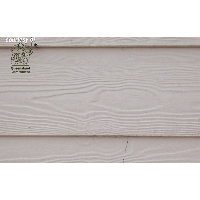
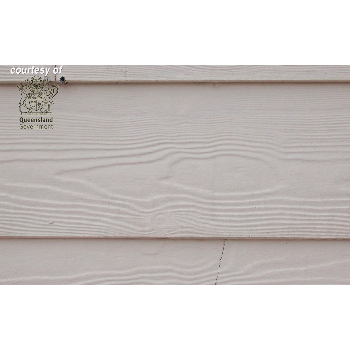 Full Size
Full Size
| Name | Hardiplank Woodgrain |
|---|---|
| Caption | Hardiplank Woodgrain |
| Location | Domestic home |
| Source | Queensland Government |
| Image Id | 285 |
| Name | Asbestos Cement Sheeting Behind Ceramic Tiles |
|---|---|
| Caption | Asbestos is located behind the bathroom wall tiles in the adhesive and the cement sheeting. |
| Location | Domestic home |
| Source | Asbestos Awareness |
| Image Id | 331 |
| Name | Asbestos cement was commonly used as gables |
|---|---|
| Caption | Gables are located at the ends of the roof line and in locations where the roof height or pitch has a change. |
| Location | Domestic home |
| Source | Asbestos Awareness |
| Image Id | 346 |
| Name | Asbestos cement used as gables |
|---|---|
| Caption | AC sheeting as gables. Gables are located at the ends of the roof line and in locations where the roof height or pitch has a change. |
| Location | Domestic home |
| Source | Asbestos Awareness |
| Image Id | 347 |
| Name | Asbestos cement used as gables |
|---|---|
| Caption | Deteriorated AC sheeting as gable on shed. This is a hazard. |
| Location | Domestic home |
| Source | Asbestos Awareness |
| Image Id | 348 |
| Name | Asbestos cement used as gables |
|---|---|
| Caption | AC sheeting as gables. Gables are located at the ends of the roof line and in locations where the roof height or pitch has a change. |
| Location | Domestic home |
| Source | Asbestos Awareness |
| Image Id | 349 |
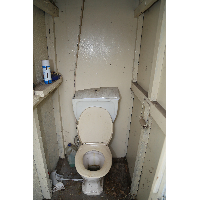
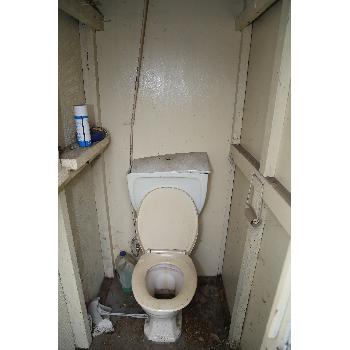 Full Size
Full Size
| Name | Outhouse |
|---|---|
| Caption | Internal of a AC sheet outhouse / outside toilet |
| Location | Domestic home |
| Source | Asbestos Awareness |
| Image Id | 365 |
| Name | Outhouse with Tilux |
|---|---|
| Caption | AC Exterior outhouse lined with Tilux sheeting |
| Location | Domestic home |
| Source | Asbestos Awareness |
| Image Id | 366 |
| Name | Under house - Asbestos Cement |
|---|---|
| Caption | AC Sheets as form work and sheeting located underneath house |
| Location | Domestic home |
| Source | Asbestos Awareness |
| Image Id | 367 |
| Name | Splashback - Vinyl |
|---|---|
| Caption | Asbestos Cement sheeting as splash back covered in vinyl. |
| Location | Domestic home |
| Source | Asbestos Awareness |
| Image Id | 375 |
| Name | AC Sheet behind wallpaper |
|---|---|
| Caption | AC Sheeting is located behind this original wallpaper. The small round nail heads are visible under the wallpaper. |
| Location | Domestic home |
| Source | Asbestos Awareness |
| Image Id | 379 |
| Name | AC Splashback |
|---|---|
| Caption | Unpainted Damaged Asbestos Cement Splashback |
| Location | Domestic home |
| Source | Asbestos Awareness |
| Image Id | 382 |
| Name | Asbestos Cement Sheeting - Extension to Federation Home |
|---|---|
| Caption | Extension to Federation house made from asbestos cement sheeting |
| Location | Domestic home |
| Source | Asbestos Awareness |
| Image Id | 389 |
| Name | Unsealed AC Sheeting in Laundry |
|---|---|
| Caption | Unlined and unsealed asbestos cement sheeting of laundry |
| Location | Domestic home |
| Source | Asbestos Awareness |
| Image Id | 393 |
| Name | AC Sheeting in Laundry |
|---|---|
| Caption | Asbestos Cement Walls are behind wall paper in this laundry |
| Location | Domestic home |
| Source | Asbestos Awareness |
| Image Id | 394 |
| Name | Unsealed AC Sheeting in Laundry |
|---|---|
| Caption | Unsealed asbestos cement sheeting in laundry as splash back |
| Location | Domestic home |
| Source | Asbestos Awareness |
| Image Id | 396 |
Awards – 2014 Winners

In 2014 there were 28 winners in the national ‘Betty Awards’ for their significant contribution to community education during national Asbestos Awareness Month. Organisations who actively participated and registered in the Asbestos Awareness Month Campaign were eligible to enter The Bettys.
Key to the campaign’s success is the invaluable contribution of stakeholders and community leaders who are able to reach out directly to their communities to help them understand asbestos products and educate them on safe practices. Of the 563 councils nationally, 343 (61%) registered their participation, an increase of 181% – the highest number of council participants since the campaign launched in 2012. In NSW, 131 (86%) of councils participated – a 98% increase on 2013, and with the exception of WA (59 Councils – 42%) over 50% of councils in all states and territories joined with the AEC to educate their communities.
Thank you for all the incredible support from all the organisations who participated.
Best Asbestos Awareness Month Campaigner: Government Department or Organisation
Winner: The Western Sydney Regional Organisation of Councils
Highly Commended: Local Government New South Wales
Most Innovative Asbestos Awareness Month Council Campaigner
Winner: Mornington Shire Council (QLD)
Highly Commended: Wollongong City Council (NSW)
Most Active Asbestos Awareness Month Council Campaigner Awards
Metropolitan New South Wales
Winner: Campbelltown City Council
Highly Commended: Pittwater Council & Camden Council
Commended: Holroyd City Council
Metropolitan Victoria
Winner: Nillumbik Shire Council
Regional New South Wales
Winner: Wollongong City Council
Highly Commended: Liverpool Plains Shire Council, Mid-Western Regional Council & Queanbeyan City Council
Commended: Bega Valley Shire Council & Cooma-Monaro Shire Council
Regional Queensland
Winner: Mornington Shire Council
Highly Commended: Cook Shire Council
Regional South Australia
Winner: Wakefield Regional Council
Highly Commended: District Council of the Copper Coast
Honourable Mentions:
New South Wales: Parramatta City Council, Wagga Wagga City Council & Albury City Council
Queensland: Maranoa Regional Council
Tasmania: Glamorgan Spring Bay Council
Victoria: East Gippsland Shire Council, Knox City Council, Maroondah City Council
Western Australia: City of South Perth, City of Greater Geraldton, City of Kwinana
Enter now!
20 Point Safety Check
 Get to kNOw Asbestos – The 20 Point Asbestos Safety Check
Get to kNOw Asbestos – The 20 Point Asbestos Safety Check
- At least 1 in 3 Australian homes contain asbestos including brick, weatherboard, fibro and clad homes and apartments.
- Asbestos was widely used in the manufacture of building materials and other products prior to being phased out by 1990 and banned in 2003. Therefore:
- If your home was built or renovated prior to 1987 it is ‘highly likely’ that it contains products incorporating asbestos.
- If your home was built or renovated between 1987 and 1990 it is ‘likely’ that it may contain some asbestos-containing materials.
- However, if your home was built or renovated after 1990 it is ‘unlikely’ that asbestos-containing materials will be present.
- If asbestos is disturbed during renovations or maintenance your health and the health of your family could be at risk.
- DIY is not recommended where asbestos is present.
- When renovating or working in and around homes, if in doubt assume asbestos materials are present and take every precaution.
- Dealing with asbestos is important and serious, but it’s not overwhelming – IT IS MANAGEABLE!
- If you’re not sure if asbestos is in your home you can have it inspected by a licenced removalist or a licensed asbestos assessor.
- Products made from asbestos cement include fibro sheeting (flat and corrugated), water, drainage and flue pipes, roofing shingles, guttering and floor and wall coverings. It could be anywhere! Visit the Asbestos Products Database to find out more.
- If you find asbestos in your home; Don’t cut it! Don’t drill it! Don’t drop it! Don’t sand it! Don’t saw it! Don’t scrape it! Don’t scrub it! Don’t dismantle it! Don’t tip it! Don’t waterblast it! Don’t demolish it! And whatever you do… Don’t dump it!”
- If left undisturbed asbestos materials in good, stable condition are unlikely to release dangerous fibres and pose a health risk. Generally, you don’t need to remove the asbestos. Paint it and leave it alone but remember to check it occasionally for any signs of wear and tear.
- There are legal requirements regarding asbestos management, its removal and disposal.
- While some might follow the regulations and safety requirements to remove small amounts of asbestos, the safest way to manage its removal is to retain a licenced professional asbestos removalist equipped to protect you and your family from the dangers of asbestos dust and fibres.
- Where asbestos fibres are friable (loose and not bonded into building materials), ONLY licenced friable asbestos removalists are allowed to remove it.
- Professional removal of asbestos is affordable. You can’t afford not to use a professional!
- The cost of asbestos removal by a licenced professional is comparable to most licenced tradesmen including electricians, plumbers and tilers.
- The cost of disposal at a lawful site is often included with the cost of removal by a licenced professional.
- If you must work with any material that may contain asbestos or remove asbestos yourself, protect yourself and your family and follow the legal and safety requirements for the management of asbestos to minimise the release of dust or small particles from the asbestos materials.
- There are a number of safety precautions you will need to take including wearing specific protective clothing, the correct mask or breathing apparatus and ensure you minimise dust and dispose of it legally. Download Fact Sheet 1 or 2 for instructions on how to do this.
- Never use tools on asbestos materials as they will make asbestos fibres airborne including: Power tools such as electric drills, angle grinders, circular saws and electric sanders. Never use high pressure water blasters or compressed air.
- Don’t play renovation roulette! Think Smart. Think Safe. Think asbestosawareness.com.au – Because it’s not worth the risk!
Important Safety Facts To Know When Working With Asbestos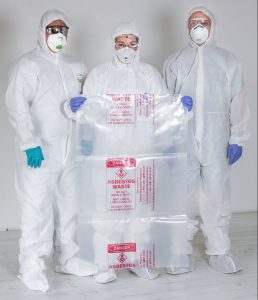
- PROTECT: There are a number of safety precautions you will need to take including wearing approved PPE and RPE such as protective clothing, the correct mask (not every mask is safe) or breathing apparatus.
- REMOVAL:
- To learn more information about working safely with asbestos read Safe Work Australia’s Model Code of Practice: How to safely remove asbestos July 2020.
- Asbestos – A guide for householders and the general public.
- To learn about specific council regulations contact your local council
- DISPOSAL: To locate your closest asbestos disposal facility visit the Asbestos Safety & Eradication Agency’s disposal database
Find Out More About Managing Asbestos Safely
Multiple Fact Sheets and downloadable resources have been developed for homeowners, tradies, farmers and commercial properties on how to manage asbestos in the their homes and workplaces safely including:
- FS1: Fact Sheet 1 Working Safely With Asbestos Around The Home
- FS2: Fact Sheet 2 Safe practices for homeowners repairing or removing small amounts of asbestos materials
- FS3: Fact Sheet 3 Rural, Regional & Farming
- FS4: Fact Sheet 4 PPE & RPE
- T2: A Tradie’s Guide To Safe Practices In Managing Asbestos In Residential Properties
- Asbestos Management Handbook For Commercial & Non-Residential Properties
- Naturally Occurring Asbestos Guide



